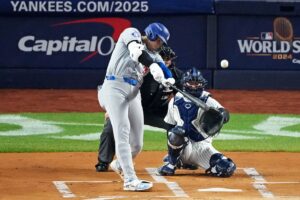Taylor Rogers Tale
The Minnesota Twins have certainly been the talk of the town this year with a resurgent 2019 campaign. Long known for their pitching the Twins offense has been the talk of the league this season. Perhaps the last team you might expect to break the single-season home run record is the Twins. They have come leaps and bounds from their 78-84 season a year ago.
A lot has gone into the bounce-back campaign, and while the offense gets the praise, it’s perhaps the pitching that has been the most effective. Even within that very conversation, few may be talking about the bullpen work. More specifically the bullpen work of the underrated pitching wonder, Taylor Rogers.
The Spotlight Take-Overs
As with any team, the starting rotation will get the bulk of the pitching credit. Make no mistake, there’s a lot of validity to the starting rotation hype of the Twins. Martin Perez yields a WAR of 1.9 while their top pitcher, Jose Berrios wields a current WAR mark of 4.1. All but one of the starting five have K/9 rates over 8.0 and three out of the five leave runners on base more than 70 percent of the time.
The offense has been especially helpful as the pitching for the Twins has received substantial run support. For the most part, it’s been easy for Twins to pitch as they have been given an average of 6.50 runs of support per nine innings. That comes on the heels of breaking the single-season team home run record.
Even the bullpen as a whole has taken some fame with a collective WAR of 6.9, third-best in all of baseball according to Fangraphs.com.
The Taylor Rogers Effect
While the offense is big, stopping opposing offenses wins games, and that’s what the Twins bullpen has done quite well this season. It’s not just a fluke either as seven relief pitchers for the Twins have over 20 innings pitched under their belts. Even with that said, the “group” effort has largely been guided by one pitcher everyone should be aware of — Taylor Rogers.
Rogers has arguably been the bedrock for a successful Twins bullpen this season. Consistency has always been a changing variable when it comes to relief pitching. But not so much for Rogers who has amassed a 3.9 WAR over the past two years. That is fourth-best in baseball among the likes of Josh Hader and others. What’s more, is that Rogers’ consistent production has placed him sixth over the past two years in Win Probability Added among relief pitchers (5.41). It has shown in his recent production as he’s been in the top 20 over the past few years in strikeout rate (30.4) and Left On Base rate (81.2).
The Allure
The biggest claim to fame for the 2012 11th round draft pick has been his productivity versus left-handed hitters. Over a current three year span from 2017 to now, lefties have managed around .180 slugging percentage against Rogers. Additionally, they have managed a mere .243 weighted on-base mark against Rogers.
Since his indoctrination into the league in 2016, Rogers has a strikeout rate of 26.7 percent. While that isn’t an eye-popping number, when you pair that up with a walk rate of just seven percent, those numbers go a lot farther. These numbers mean even more to a team who hasn’t been particularly great in those departments when it comes to recent postseason appearances.
Now some may site a cry wolf scenario with relievers thanks to past performances by Anthony Swarzak and Craig Stammen. Rogers himself had one magical season which happened in 2018 where he posted a 2.63 ERA. He was nearly unstoppable against batters on both sides of the plate. Against righties, the wOBA was .267, and against lefties, it was .202. Where he’s been subject to mediocrity has been slight misuse by the Twins organization. Some of his worst statistical outings have come when Rogers rarely faced left-handed pitching.
A Few Changes
While we still may not know if this hot streak by Rogers will last, there’s a good indication of such based on the changes he made. We’ve seen it throughout history, athletes make minor changes to their game, and they’re a whole new player. That’s the boat Rogers is in which makes it seem like he’s here to stay.
It started back when he came into the league wielding a pitching arsenal of a curve-ball, fastball, two-seam fastball, and a slider. Prior to 2019, Rogers basically trimmed it down to just a two-seam fastball and curveball exclusively. The slider wasn’t used, but as of June this year, the pitch made a comeback in Rogers’ repertoire.
Rogers then proceeded to utilize his slider a lot and in a more effective manner. That along with changing up his release point and arm angle with his curveball really improved his performances. As noted by Ben Clemens of Fangraphs.com, Rogers’ mark of a 13.7 percent swinging strike against right-handed hitters was among the best in the league this year. In fact, his swinging strike rate in 2019 (10.9 percent) is top 15 in the MLB among relief pitchers.
Rogers even improved upon his velocity which upon his arrival to the MLB was low-90’s at best on his fastball. That average has now shot up to 95 mph, and he’s even topped 97 mph a few times.
Rogers as a Big Postseason Weapon
While the offense gets a lot of credit, the starting rotation does overshadow the bullpen. But make no mistake, Rogers is a big weapon for the Twins. He is a pitcher than can cool down offenses in a hurry. With the home run offense for the Twins, there’s plenty of offense to back him up. If there was ever a sure-fire dark horse for the Twins this postseason, Rogers certainly fits that bill. One thing is four sure the Twins need the best of Rogers if they want to make noise in the playoffs.






